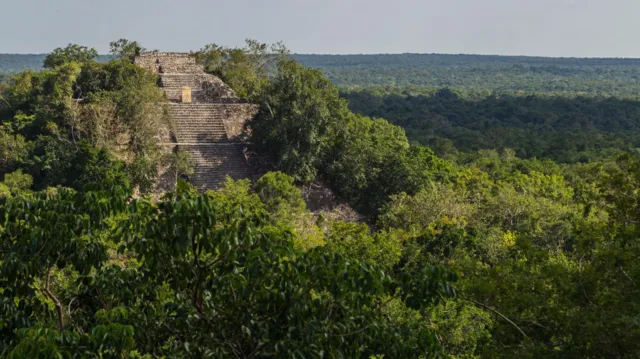A long-lost Maya city has been discovered under the dense jungles of Mexico, centuries after it vanished.
Archaeologists uncovered pyramids, sports fields, roads connecting different areas, and amphitheaters in the southeastern region of Campeche. The newly found city, named Valeriana, was revealed using Lidar—a technology that uses lasers to detect structures hidden beneath vegetation.
Researchers believe Valeriana is the second most densely built Maya site, only behind Calakmul, the largest known Maya city in Latin America. Surprisingly, the discovery happened by chance when Luke Auld-Thomas, a PhD student at Tulane University, stumbled across a laser survey online while scrolling through search results.
Auld-Thomas found a survey conducted by a Mexican group for environmental monitoring. Using Lidar, which sends laser pulses from a plane to create a map of what lies below, he noticed details others had missed—a vast ancient city that could have housed between 30,000 to 50,000 people at its peak around 750 to 850 AD. This population is larger than the number of people currently living in the area.
The city was named Valeriana after a nearby lagoon. Its discovery challenges the old belief that tropical regions were unsuitable for advanced civilizations. Instead, it shows that these areas hosted rich and complex cultures, says Professor Marcello Canuto, who co-authored the research.
Although the exact reasons for the city’s abandonment remain unknown, climate change likely played a significant role.
The lost city, spread over 16.6 square kilometers (about the size of Edinburgh, Scotland), had two main centers with large buildings about 2 kilometers (1.2 miles) apart. These were connected by densely packed houses and roads. Valeriana featured plazas with temple pyramids for religious ceremonies, treasures like jade masks, burial sites, and even a court for an ancient Maya ball game.
Archaeologists also found evidence of a reservoir, indicating the city had systems to support its large population.
The discovery shows how little-known ruins can still be hidden in plain sight—Valeriana is just a 15-minute walk from a main road near the town of Xpujil, where many Maya people still live.
So far, no pictures of the city exist since no one had previously explored it. However, locals may have suspected ancient ruins lay beneath the mounds of earth. In total, the research team found 6,764 buildings across three different sites.


